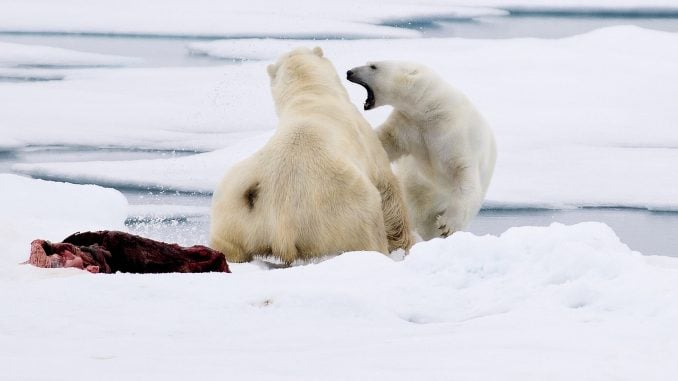
It’s time for an open and frank national conversation about bear propaganda.
Having grown up in New York City, I had not been made aware of the problem until fairly late in life. This was remedied by my lovely wife, who grew up in Fairbanks, Alaska, where bears are not an abstraction. In policy terms, I was an idealist and she was a realist.
The issue didn’t come up much during the wooing stage or the early years of our marriage. But as often happens with matters of core conviction, it was when we had a child that my wife’s passion on the issue was made clear to me. Any time my daughter and I watched something on TV featuring a bear behaving like a cuddly companion or some majestic, gentle denizen of the woodlands for hippies or retirees to take pictures of, my wife would shout, “That’s bear propaganda!”
I was once watching a credit card commercial with my daughter in which a middle-aged woman was fulfilling the dreams that only MasterCard or Visa can make reality. She sat on a bus snapping pictures of some glorious polar bear that came right up to her window.
At that moment, the mother of my child walked into the living room with a look on her face like she’d caught me watching “Apocalypse Now” with a 5-year-old. “Bear propaganda!” she shouted. “It wants to eat her face.”
It’s been one of the staples of home life. If we’re watching a documentary about adorable bear cubs, she’ll explain that they’re just waiting to get big enough to eat our faces. Performing bears? Biding their time for the right moment to eat your face.
And even though my daughter and I tend to make fun of mommy’s obsession, over the years I’ve become convinced.
The culture is shot-through with bear propaganda. Coca-Cola runs elegant Christmastime cartoons of polar bear families celebrating the season. Never mind that male polar bears are cads who spend a few days with the single white females before scampering off to spend the rest of their lives as deadbeat dads. Also, if the supply of adorable (yet tasty!) seals runs low, the males have been known to eat bear cubs.
They also eat other things when the opportunity arises. Last month, a video of a polar bear palling around with a dog went viral, appearing on numerous news shows and eliciting a chorus of “awws.”
But experts in polar bear behavior recognized that the bear was checking it out the way an experienced shopper squeezes a cantaloupe.
“To me, it’s like it’s trying to see if the food’s ready or not,” Tom Smith, a wildlife biologist, laughingly told the Washington Post. “It’s not surprising that it would try to explore this dog … but I guarantee if you left that bear there long enough, it would say, ‘I wonder what this dog tastes like?'”
Well here’s the good news: The bear didn’t eat the dog. The bad news: It (or another bear) ate a different dog. Why? Because that’s the kind of thing polar bears do.
But you wouldn’t know that from popular culture. Every couple of months, a new big-budget animated film comes out “Finding Dory,” “The Secret Life of Pets,” etc. in which animals have human personalities. Many animal lovers think it’s harmless and entertaining and in one sense they’re right. I like a lot of those movies.
But it’s a remarkable thing if you take a step back and think about it. Many of these movies treat humans as the enemy cruel, careless despoilers of the environment while at the same time telling us that the highest compliment we can pay to animals is to assume they’re just like us. These movies tell us virtually nothing about animals but a great deal about ourselves. Warthogs don’t sing “No Worries,” and sharks have never joined a support group that says “fish are friends, not food.” By all means, put down the crystal and swim with your spirit-animal dolphin friends. But bear in mind, male dolphins are rapists.
And should you get a chance to steal a hug from a polar bear or grizzly, don’t be surprised when it eats your face.
Jonah Goldberg is a fellow at the American Enterprise Institute and a senior editor of National Review.



